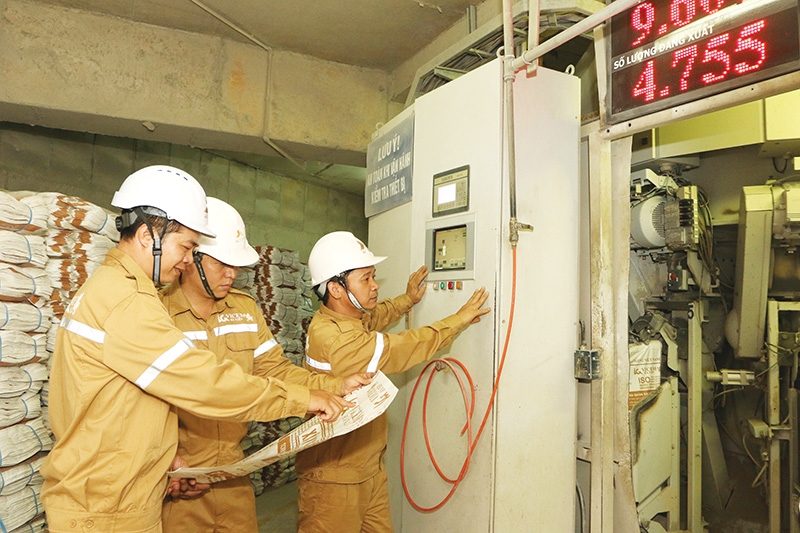Reopening local markets and getting back to business in the new normal
 |
| By Le Khanh Lam Partner, RSM Vietnam |
Despite the uncertain economic situation, enthusiasm for reopening was a predominant theme, regardless of business size. But attitudes and approaches towards remote work, the timing of reopening, the measures necessary to prepare employees and businesses for restarting their offices and facilities, and the handling of reopening costs varied significantly between larger and smaller middle market companies.
However, it seems that smaller middle market firms, while typically more nimble with their operations, will likely feel more pressure on their margins in the near term, due to their inability to pass reopening costs downstream to their customers.
Strictly complying with social distancing orders to fight the pandemic, a range of businesses have rescheduled plans for all employees. The options that remain open rely on remote operations, as the pandemic is forcing businesses to consider more efficient strategies for working remotely. Not surprisingly, larger enterprises with more sophisticated communications infrastructure saw their employees more readily pivot to remote work. For instance, in March e-commerce company Tiki let thousands of office workers nationwide work from home for a week.
However, encouraging staff to work from home has become a new experiment exciting many white-collar employees until they realise it is not as exciting as they imagined with reducing face-to-face communication, and hurting efficiency. Furthermore, getting back into the office can create a lot of issues for companies, although smaller companies can adapt and accommodate these issues with more agility than larger companies.
On the positive side, the limited use of remote work by smaller middle market companies, combined with their nimbleness, may give those businesses a leg up when returning to the workplace.
The attitudes of employees toward workplace safety was paramount to nearly all executives polled. Most executives said that employee readiness was a consideration in their reopening plans. The majority of workers themselves appear eager to return. As regards companies planning to reopen their workplace location, the majority of executives in organisations had surveyed their workers, either formally or informally about their readiness to return.
But the scope of their companies’ operational footprint led to differing views on the timing of reopening. Those businesses with just a single location - typically smaller middle market businesses - appeared more aggressive with respect to maintaining and restarting operations.
 |
| New strategies may be required to ensure workplace safety during pandemic times and beyond |
Safety and disparities
The employees will have new regulations on seat positions to ensure a safe distance. Accompanied by mandatory health instructions such as wearing a mask, using hand sanitiser, and measuring temperatures. Inside the office, mobility will be strictly controlled, and employees still wear masks and are encouraged to use the stairs instead of the elevator. They are also instructed to use hand sanitiser before and after touching handrails in elevators or stairs.
In some places, staff members were seated two metres apart and the aisles were designed in one direction to avoid collisions. Workplace design must change - offices will be less crowded and changed into places where viruses can be prevented.
Implementing strategies to ensure the safety of the workplace during a pandemic comes at a cost impossible to account for in an annual budget. Entire supply chains are being disrupted, and the specific allocation of increased costs has yet to be universally determined.
Larger mid-sized businesses were also more apt to rely on sophisticated technology to communicate their return-to-work guidance to employees. Most enterprises made use of virtual meeting platforms such as Zoom. Meanwhile, the majority of companies in the larger middle market leveraged company intranet or web-based platforms or Microsoft teams and training videos.
These are unprecedented times for organisations across the entire Vietnamese economy. Each industry will have to work within its unique parameters at getting their employees back to work. But the positive approach to reopening demonstrated by middle market businesses bodes well for their continued success.
Transparent policies, frequent communications with employees, and workplace safety measures are among the components required for companies to bring their employees back to the workplace as the pandemic plays out. However, there are deeper considerations that businesses must consider, including overall people morale, productivity, and equity measures when facing predominantly virtual environments.
For enterprises, it is a concern for human resources in terms of how to support employees when working from home. Besides that, employees will have to help employers understand the limitations and needs in order to work through issues. In turn, employers must provide structure and human resources policies to provide guidance.
Likewise, productivity and employee engagement in a remote setting are important. Because of office shutdowns, diminished contact, limited travel, and other pandemic restrictions, isolation has become a norm. Indeed, there are virtual connection points, but decreased face-to-face interactions and limited movement have taken their toll.
This decreased engagement has a way of dampening employees’ spirits and fostering depression. Fresh ideas and creativity may suffer, and attention spans may wane. Employers will have to think of ways to combat isolation and reinvigorate people to spark engagement, maintain productivity and keep morale from eroding.
Finally, while remote work provides the answer now for a wide range of businesses, certain enterprises are maneuvering to bring more employees back to the workplace.
Back to business
The three Ps of people, productivity, and parity must be considered when thinking through reopening efforts. Are your employees’ needs considered regarding flexibility and work-life demands, and do your HR policies address these concerns? Are you monitoring performance and productivity, and do you have an employee assistance programme in place to provide counselling and other resources for your people?
Finally, when bringing employees back in the workplace, are you thinking through equity measures to ensure all employees - both on-site and remote - have similar opportunities related to career, training, and engagement?
In preparing to reopen offices and work sites, companies should communicate thoroughly and frequently with employees about what the reopening process entails. That might involve educating employees about what new pandemic-related regulations companies are required to adhere to, explaining new office configurations or distributing masks and other personal protective equipment. All of this can help to put employees at ease.
Several companies are implementing flexible schedules that allow employees to manage their time as needed in order to balance work and life in a healthy way.
There is no one-size-fits-all solution; employers and employees are going to have to be flexible with providing information as well as receiving the information. Companies can also support employees by promoting and enabling them to take courses to grow their skill sets or enhance their professional development.
Executive leadership might encourage employees to stay up to speed on the host of new policy implications the pandemic has spurred. These efforts can help employees feel supported by their companies during this time of uncertainty as work sites reopen.
In short, employers and employees need to be flexible while adapting to changing work environments; companies need to communicate clearly with employees about what reopening entails; and businesses may want to encourage employees to take opportunities to continue their professional development and grow their skill sets.
What the stars mean:
★ Poor ★ ★ Promising ★★★ Good ★★★★ Very good ★★★★★ Exceptional
Related Contents
Latest News
More News
- Implementation of the circular economy in Vietnam (November 13, 2023 | 11:30)
- Banking’s development in data and digitalisation era (November 07, 2023 | 15:24)
- ESG enabling real estate businesses to attain funds (June 16, 2023 | 15:25)
- RSM Vietnam stays ahead of the changing business environment (March 14, 2023 | 10:07)
- What might the Vietnamese economy look like in 2023? (January 02, 2023 | 21:37)
- Neobanking: a trend-setting model for the digital revolution (December 19, 2022 | 14:30)
- Evaluating the prospects of M&A upswings next year (November 28, 2022 | 08:00)
- RSM Vietnam celebrates opening new office in Ho Chi Minh City (September 20, 2022 | 19:29)
- RSM Vietnam taking advantage of central region recovery to expand operations (September 19, 2022 | 08:00)
- Firm grasp of rules crucial in handling customer info (August 29, 2022 | 08:00)

 Tag:
Tag:






















 Mobile Version
Mobile Version